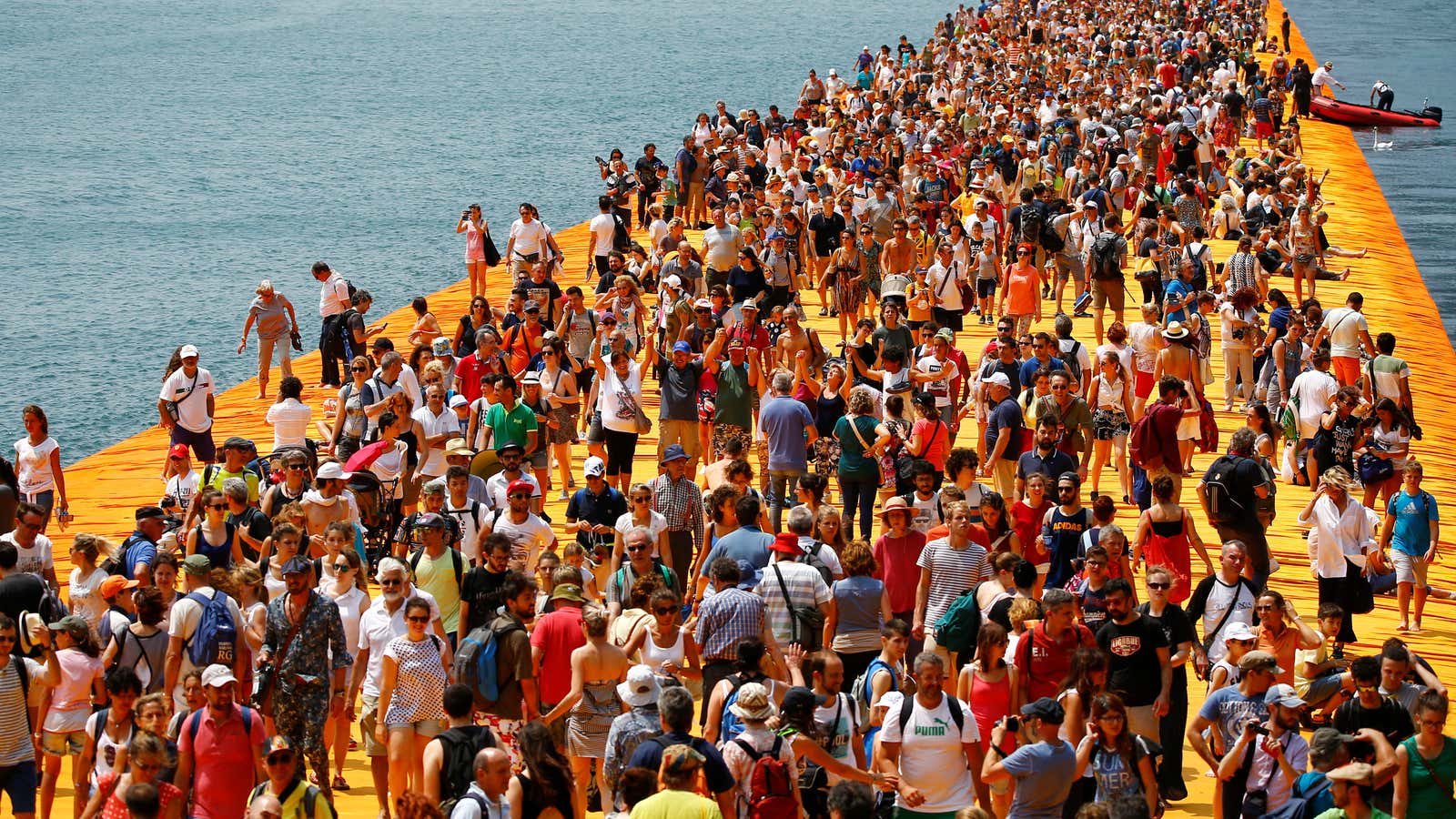When it comes to global tourism, 2017 was a boom year. Even amidst global instability, terrorist attacks, and natural disasters, tourism didn’t just hold steady—it ballooned. Numbers from the United Nations World Tourism Organization (UNWTO) show close to 60 million more international tourist arrivals worldwide between January and August 2017 than the same period in 2016.
There are reasons to believe this uptick will continue into 2018 and beyond. After all, tourism has reached a historic moments of sorts. Thanks to convenience and awareness of online booking and travel tools, low cost airfares, the growing global middle class, and millennials reaching their peak earning years, more people are traveling than ever before. The UNWTO expects international tourist arrivals will grow to 1.8 billion by 2030.
But the picture is not entirely rosy. With all this growth comes a major challenge: overcrowding. Maybe you’ve noticed it at some of the world’s hotspots: a monstrous queue to get into the Eiffel Tower, Angkor Wat, or Sagrada Familia can really shatter the fantasy you imagined when scrolling the attraction’s geotag on Instagram. Indeed while over-tourism is nothing new, it’s reached a fever pitch of sorts, thanks in part to panicked media headlines like: “Iceland becoming ‘Disneyland’ as US tourists outnumber locals.”
But beyond the media panic, the problem of over-tourism is very real—and it’s hitting cities like Barcelona and Venice particularly hard. While conventional wisdom goes that the economic contribution of travel outweighs its drain, officials and local residents are increasingly not convinced by those benefits. Resistance to tourism has spurred phenomena like the “Ven-exodus” that has cut Venice’s local population by half in just three decades.
According to a new report (PDF) from the World Travel and Tourism Council (WTTC) and McKinsey, some locations are already taking a surprising, if a bit heavy-handed step to combat the problem: setting up restrictions on when, where, and how long travelers can visit. As the report noted: “Restricting tourism is a tricky business, and it is likely to provoke opposition from those who may lose income—or fail to see growth—as a result. Perhaps surprisingly, many of the private-sector leaders who spoke with us agreed that some destinations are hitting their limits.”
In other words, right at the moment when travel is becoming more accessible and less elitist than ever before, we could see a reversal of that openness in the name of long-term sustainability. And it could have an effect on how and where you book your next vacation.
One example where this is already the case is the Galapagos Islands, which were placed on UNESCO’s “in danger” list a decade ago because of the impact visitors were having on its endemic ecosystem. In 2012, the Ecuadorian government imposed a limit of 15 days and 14 nights per cruise ship passenger. In a similar move highlighted by the WTTC report, Dubrovnik, Croatia—also a World Heritage site with just 1,000 permanent residents—is attempting to cut the 800,000 cruise ship visitors it received in 2016 to just 4,000, using visitor tracking via surveillance video cameras and limiting cruise ship arrivals during peak times.
Other methods of enforcement come in the form of imposing barriers to entry to particularly popular spots. California State Parks require pre-booked reservations for campers, which is a policy that other National Parks are looking to implement. There’s also the less draconian measure of “nudging” tourists to visit attractions at less busy times, such as in Amsterdam, which has developed an app that sends push notifications to tourists suggesting alternatives when queues at hotspots are long.
While there are various ways of doing it, the prospect of imposing visitor limits doesn’t sit well with everyone. As the WTTC report asked: “But is it reasonable to reduce visitor numbers to a more sustainable level if that action also makes the destination accessible only to the wealthy? What of the view, espoused by some, that travel is a basic right?”
If 2017’s travel numbers are anything to go by, these tough questions are not ones that are going away any time soon.
